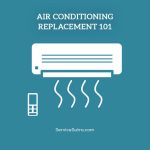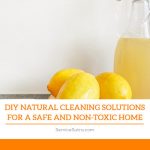Cleaning and disinfection are vital, especially in public and commercial environments where illnesses can readily spread. Many people need to know the correct methods. Even with constant efforts, cleaning and disinfection are not always carried out successfully. Different settings call for other processes to guarantee complete cleaning and indoor disinfection. Here are five steps to efficient cleaning and disinfection.
Remove Excess Dirt
Eliminating obvious filth, grime, and trash from surfaces forms the first step in indoor and office disinfection services. This stage is crucial since physical dirt can function as a barrier, preventing cleaning chemicals and disinfectants from efficiently accessing and eliminating dangerous germs. Use tools like a scraper to sweep off or clean away obvious dirt.
If there is dirt in the kitchen, pre-soak the area with a mild detergent. In offices, vacuuming carpets and dusting surfaces helps eliminate small particles. Baltimore pressure washers can also provide deep cleaning services to ensure all dirt and grime are effectively removed before disinfection.
Clean With Appropriate Cleaner and Hot Water
Cleaning the surface with hot water and an appropriate cleaning product comes next once the extra dirt is taken out. This stage aims at residual dirt and organic materials capable of hosting diseases, including bacteria. Choose a cleaner suitable for the surface and the kind of grime present.
For example, whilst alkaline cleaners are good for grease, acidic cleaners are successful against mineral deposits. To guarantee complete covering, apply the cleaning solution with a cloth. Hot water increases the efficacy of detergents and breaks down grease. This improves the cleaning action. During this stage, eliminate all obvious dirt and pollutants since any leftover material can compromise the efficacy of the sanitizing and disinfection process.
Rinse the Area
Rinsing the surface helps to eliminate any last traces of cleaning agents once they have been used. This stage helps stop possible chemical interactions that can lower the disinfectant’s efficacy. Slash down the surface with fresh water with a cloth or sponge. Rinsing larger areas or equipment with running water could be required.
Ensure no soap or detergent residue stays since these might react with disinfectants. This reduces their capacity to fight germs. Good rinsing removes chemical residue that interferes with the disinfectant’s activity. This provides a clean slate for it to work on.
Disinfect the Area
Applying a disinfectant comes first once the surface is cleaned and clean. This is the most critical stage in lowering dangerous germs to reasonable levels. Select a suitable disinfectant for the surface and the kinds of germs most likely to be found there. For equal coverage, apply the disinfectant using a cloth.
Combine one tablespoon of bleach with a gallon of water. Use cautiously to prevent breathing dangerous fumes. For the suggested contact time, follow the product’s directions and let the disinfectant stay on the surface for the designated period to guarantee it kills dangerous bacteria.
Drying
Moisture helps the growth of mold. This means proper drying is crucial. Let surfaces air dry. This isn’t always feasible during business hours. Dry surfaces thoroughly using single-use cloths or clean, disposable towels to speed up drying.
Every single-use item serves a purpose, so utilize them sensibly to reduce environmental impact and maximize hygienic conditions. When the office is quiet, and the bustle has subsided, air dries to perfection wherever at will.
Endnote
Any environment’s cleanliness and safety can be greatly improved by knowing the difference between cleaning and disinfection and adhering to a methodical procedure. Following these five steps of disinfection and cleaning guarantees a comprehensive approach to preserving hygiene and stopping the spread of illnesses, whether in households, hospitals, or commercial kitchens.






